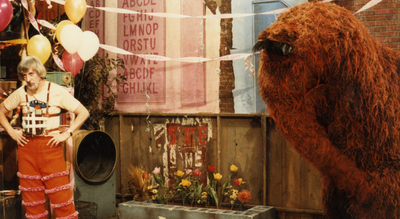
BY KAREN KEMMERLE |
Do This Year's Oscar Nominations Signal the End of Celluloid?
Can film survive the digital revolution? That question has become more relevant than ever given the nominees for Best Cinematography at the 85th annual Academy Awards.

The way we make and watch movies is changing, and the fact that film is no longer the dominant cinematic medium is apparent now, more than ever. While the Oscar nominations of any year always bring a fair number of surprises, in 2013 the nominations for cinematography tell the story of the increasing influence of the digital format, both by what was singled out by the Academy, and by what was not.

Particularly of note is the snub of Mihai Malaimare Jr.’s beautiful photography in The Master. Shot entirely in 65mm, The Master was famously screened in 70mm in most theaters still capable of using the format. So what gives?
It is true that of the five films in the Best Cinematography category, three were shot on film. Among those nominees is Bob Richardson, a three-time Oscar winner (including The Aviator and JFK), who received his eighth nomination for his work on Django Unchained. The “slaveploitation” movie marks Richardson’s fourth collaboration with Quentin Tarantino, who makes no secret of his disdain for digital filmmaking. (Interestingly enough, Richardson won last year in the same catagory for Hugo, which was shot entirely on the Arri Alexa and in 3D.)

Janusz Kaminski, who has shot every Steven Spielberg film since 1993’s Schindler’s List, was nominated for the sixth time in the Best Cinematography category for his 35mm work in Lincoln. He previously won Oscars for Schindler’s List and Saving Private Ryan. Finally, Seamus McGarvey was nominated for his work in Anna Karenina, shot in lush anamorphic 35mm. Fun Fact: McGarvey actually shot his first digital film this year—none other than The Avengers.
Despite the cinematography nominations for Django Unchained, Lincoln, and Anna Karenina, what is notable is that other much publicized film achievements that ultilized traditional Hollywood techniques were snubbed by the Academy in 2013. Of the snubs, neither Robert Yeoman (Dogma, Rushmore) nor newcommer Ben Richardson received nominations for Moonrise Kingdom or Beasts of the Southern Wild, both of which were beautifully shot on 16mm. Even more surprising was the lack of recognition for famed cinematographers who employed innovative film techniques to great effect.
Wally Pfister (The Dark Knight, The Prestige), for example, used both 35mm and 65 mm IMAX to achieve the look of this year’s The Dark Knight Rises. In 2010, Pfister, using the same technique, won an Oscar for his work in Inception. Likewise Rodrigo Prieto (Brokeback Mountain, Babel) did not receive a nomination for his inventive use of both film and digital photography in Argo. Another surprising oversight? Ron Fricke’s cinematography featured in the documentary Samsara, which was shot solely in 70mm over the course of four years and took place in 25 countries across 5 continents.

However, the digital films that were included in this year’s nominees for best cinematography are notable as well. Previously recognized with an Oscar nomination in 2008 for The Curious Case of Benjamin Button, Claudio Miranda is nominated this year for his stunning work in the Life of Pi, shot exclusively on Arri Alexa and in 3D. Also recognized is Roger Deakins, who famously has been nominated in the Best Cinematography category eleven times without a win. This year, he is hoping that his work on Skyfall, also shot on Arri Alexa, will finally put him in the winners circle. Skyfall has the distinction of being the first James Bond movie to be shot digitally—it will not be the last.
Considering the films that were nominated and those that were snubbed this year in the Best Cinematography category, this showdown between film and digital is a firm indication that our industry is entering into a pivotal time with the ultimate fate of celluloid as a medium hanging in the balance.
Documentaries like Side by Side, which ignited debate on this very topic at the 2012 Tribeca Film Festival, have never been more relevant. Here's the trailer:
More from Tribeca:
Prequel: Director Brian Buckley's Journey to the Oscars for 'ASAD'

